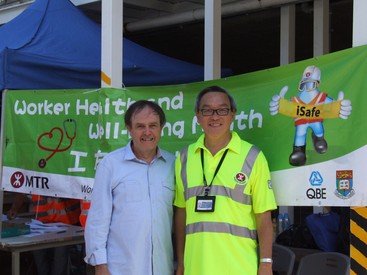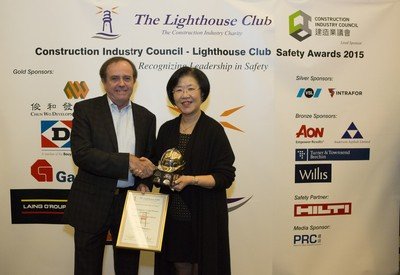Hot Weather Relief for Labourers
Sheltered rest areas, ventilators, unlimited supplies of potable water and promotional campaigns – are now commonplace on construction sites.
Workers have much better welfare treatment than they ever did in the past.
Hong Kong summers can be brutal for most of us, but for construction workers the high temperatures and high humidity are downright dangerous.
Heat stress, which exhibits as anything from simple fatigue to heart attacks, has been a problem on construction sites. But the work of Professor Steve Rowlinson and his team in the Department of Real Estate and Construction is helping to improve the situation.
The team developed a model for dealing with heat stress based on on-site environmental measurements, such as temperature, sun exposure, humidity and wind speed, and measurements of workers' physical health such as heart rates, blood sugar levels and blood pressure. Their model recommended morning and afternoon rest breaks in addition to lunch time and the provision of shelter and access to water for workers at any time.
The model was incorporated with input from other sources into updated heat stress guidelines for workers that were adopted by the Construction Industry Council (CIC) in 2013. "The past guidelines were not scientific and they were not restful on the body," Professor Rowlinson said. "Our work has been able to scientifically plot the points at which heat stress becomes a dangerous issue and propose how to avoid that."
He received the Golden Helmet Award for safety leadership in 2015 from the CIC and Lighthouse Club (HK), but his work did not stop there. He also assessed the impact of the revised guidelines over two consecutive summers after their implementation, with support from the KE Fund.
This involved presentations and discussions with more than 250 construction workers, supervisors and managers on their awareness of the guidelines, workers’ needs, and the sharing of views and practices. A report on that project was completed last summer.
“We found that the mitigation hardware recommended by the guidelines – such as sheltered rest areas, ventilators, unlimited supplies of potable water and promotional campaigns – are now commonplace on construction sites,” he said.
Moreover, some companies have gone much further. Major players, such as the Mass Transit Railway Corporation and Gammon Construction Limited, have implemented health checks of their workers. "This is a significant change from 10 years ago when no health checks were done," he said. "Workers have much better welfare treatment than they ever did in the past."
The achievements are important not only to workers but the construction industry, where workers' average age is 46 years old and the industry has difficulty recruiting young workers at a time when demand is high. "There is an economic imperative to think about how to make the job easier for workers. The ageing workforce is a problem in Mainland China, too," Professor Rowlinson added.



